What is a Directional Control Valve?
In this article, you’ll learn about the working principles of the directional control valve in pneumatic system.
If you have ever come across a pneumatic or hydraulic system in the industry, you may have seen directional control valves or spool valves. There are a variety of well-known control valves in the industry such as Globe Valves.
But today’s article is about different types of control valves known as Directional Control Valves or DCVs for short. You may hear of them as solenoid valves or spool valves as well.
If you want to know how directional control valves work and how you should read and interpret their symbols, read this article to the end, or watch the following video.
Directional Control Valves vs. Modulating Control Valves
The control valves are mostly known by their adjustability and throttling capabilities.
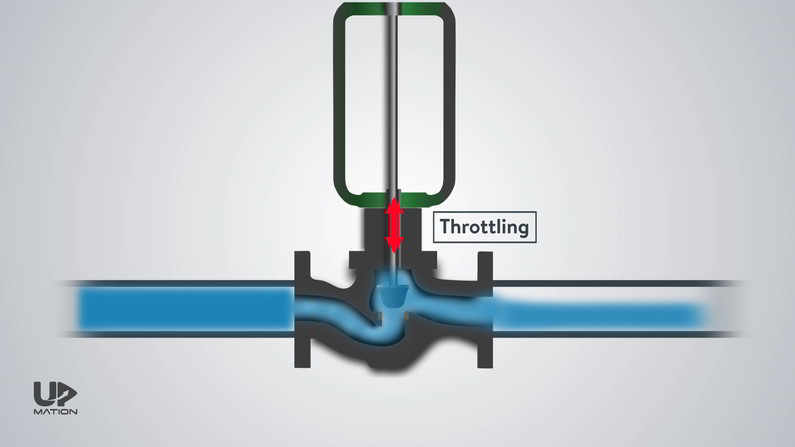
But directional control valves or DCVs are the types that control the “direction” of the liquid flowing inside the pipe.
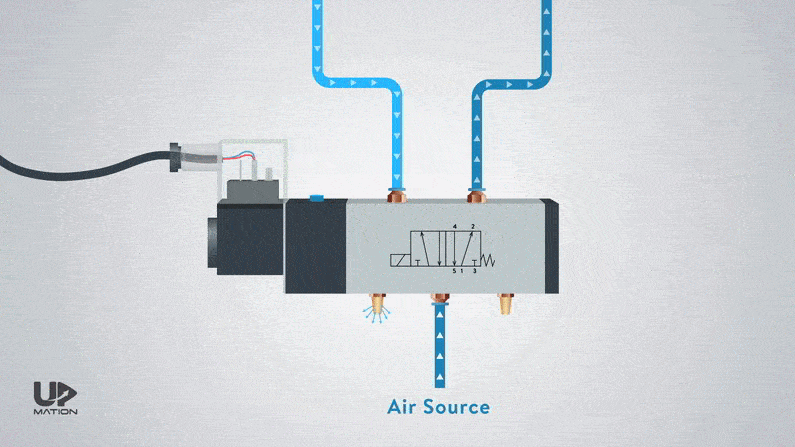
Directional control valves are used both in pneumatic and hydraulic flow control systems.
So there are pneumatic directional control valves and hydraulic directional control valves. Sometimes the hydraulic directional control valves are called spool valves.
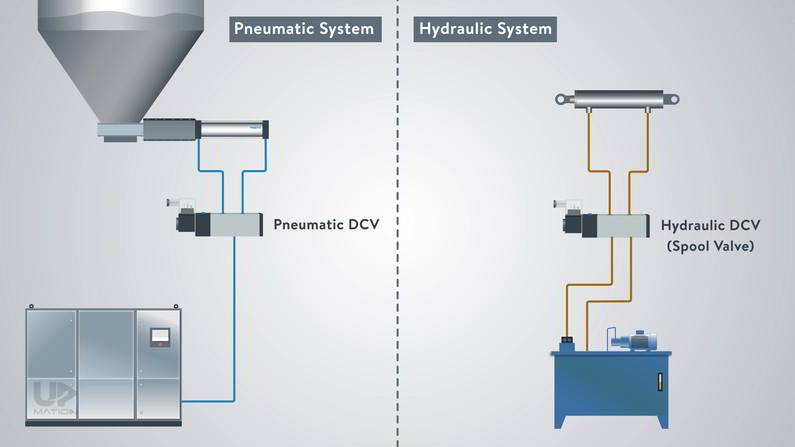
Directional Control Valve Application Example
As we’re learning about the basics of the DCVs in this article and there’s not much difference in their working principle and symbols, we develop our example based on a “pneumatic” system. And of course, if you learn one of them you can easily learn the other.
Let’s start with a simple pneumatic circuitry.
The main power of this pneumatic system is coming from the compressed air that is supplied by a compressor.
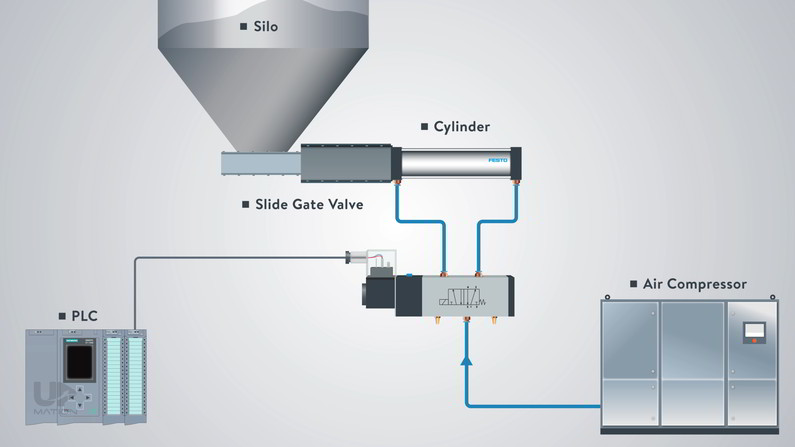
The directional control valve is directing the flow of the compressed air in two different directions to open and close this slide gate valve using its actuator which is a double-acting cylinder.
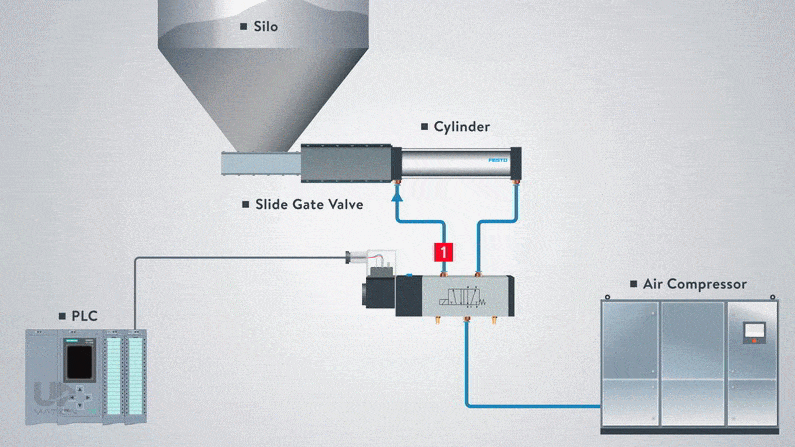
A double-acting cylinder has an air chamber on each side to move the piston back and forth.
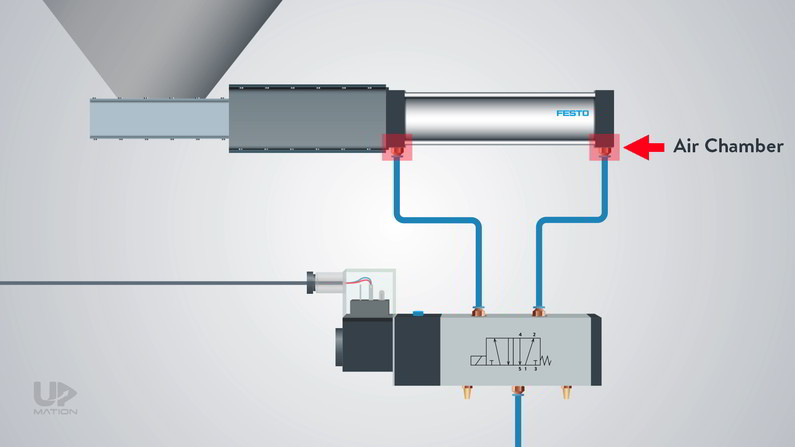
One of the directions expands the cylinder and closes the slide gate valve to block the material coming out of the silo, and the other direction retracts the cylinder to its first position.
Therefore, the slide gate valve is normally closed valve.
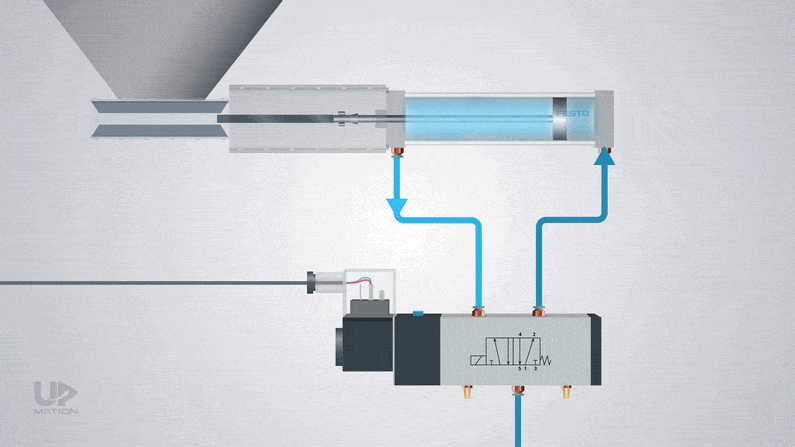
Now, let’s take a look at the components and simplified mechanism of the directional control valves.
Directional Control Valve Components
First, is the body or housing of the control valve inside of which, there are the paths that air flows through them.
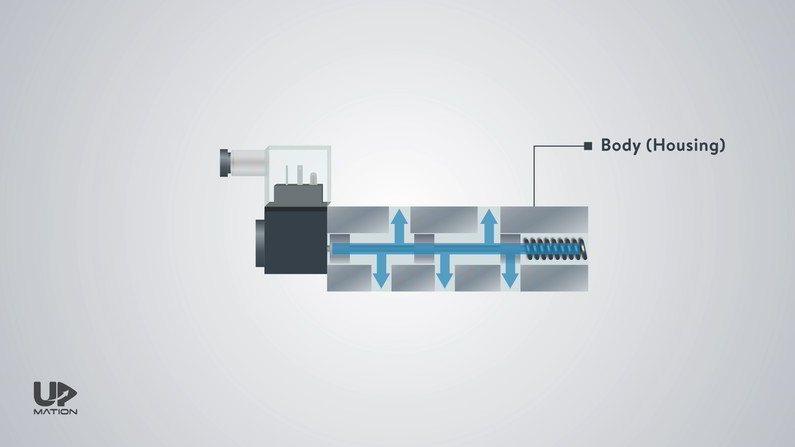
There are some machined holes in the body of the valve that is called Ports.
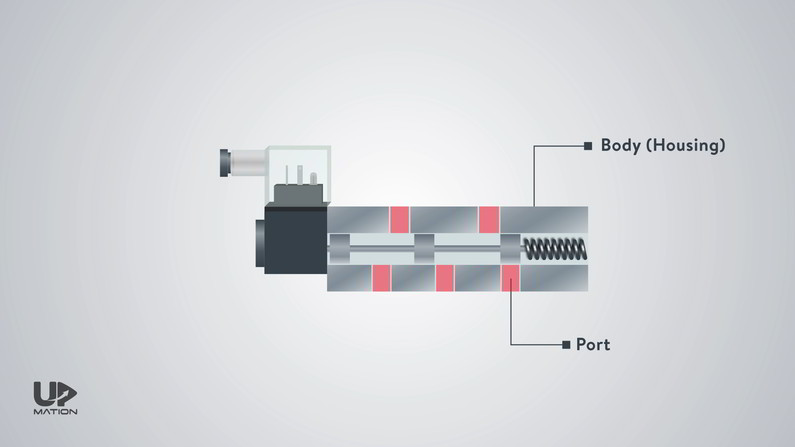
Within the housing, there’s a moving part that leads the air toward different ports of the valve and blocks the others. This moving part is commonly referred to as Spool.
The component that causes the spool to move within the housing, is an electric Solenoid.
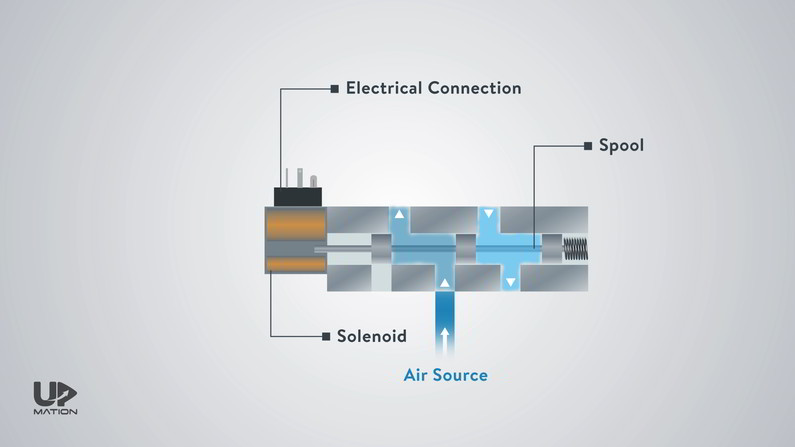
How Directional Control Valve Works (5/2 Solenoid Valve)
When the spool of the DCV is on its neutral or rest position and the solenoid gets energized by a command from the PLC card, the coil will push the spool and thus it will squeeze the spring on the other side.
As a result, the piston of the cylinder retracts and moves to the right side.
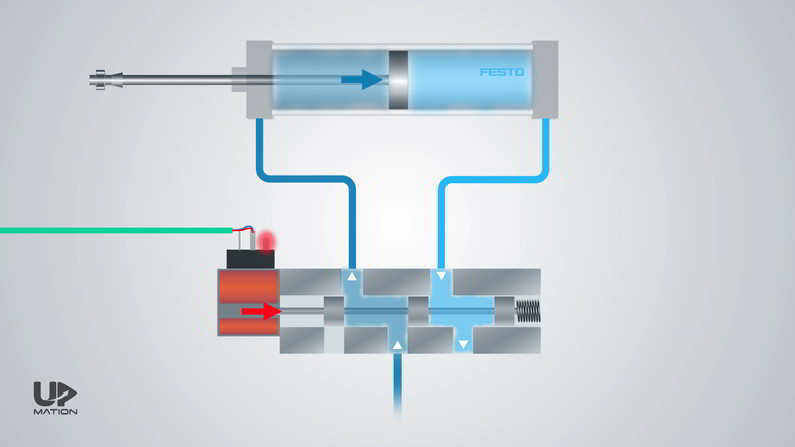
As long as the PLC’s command remains on the solenoid, the position of the spool will remain still and the compressed air will cause the piston to keep its last position.
As soon as the PLC removes the command, the spring will return the spool to its first position and the air path will be changed.
Therefore, the air behind the piston will be purged into the atmosphere via the valve exhaust port.
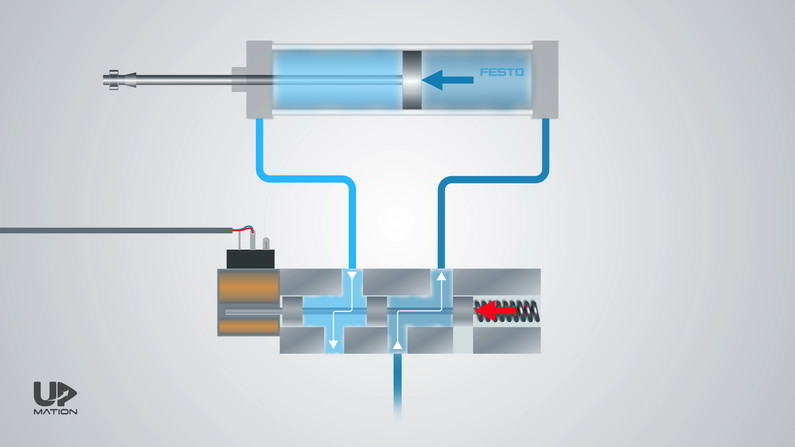
Now, it’s time to learn how to name the directional control valves and how to read their graphic symbols.
Why do They Call it a 5/2 Directional Control Valve?
The valve in our example is known as a 5 by 2 solenoid valve or a 5 by 2 directional control valve.
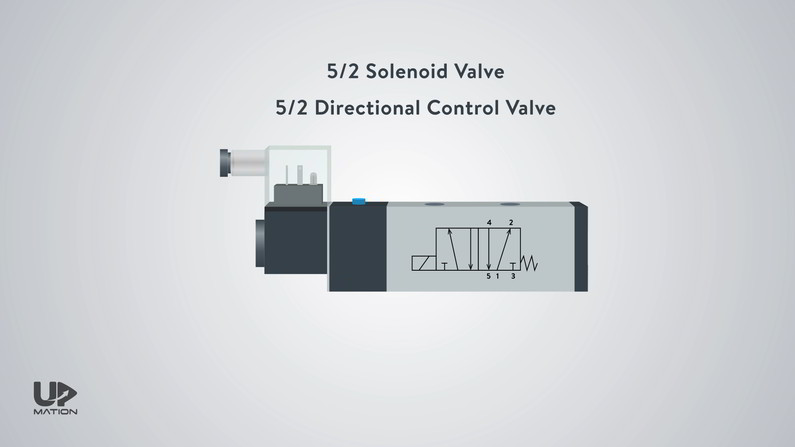
But why do we call it 5 by 2?
– The first digit is for the number of ports the valve has.
– The second digit is for the number of states the spool can be in.
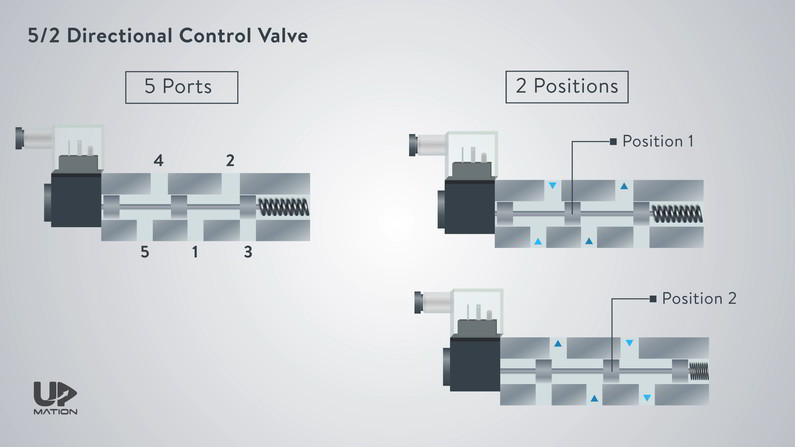
How to Read a Directional Control Valve Symbol
Reading and interpreting the directional control valve symbols may seem a little bit challenging sometimes.
For instance, let’s consider a 5/2 pneumatic directional control valve symbol.
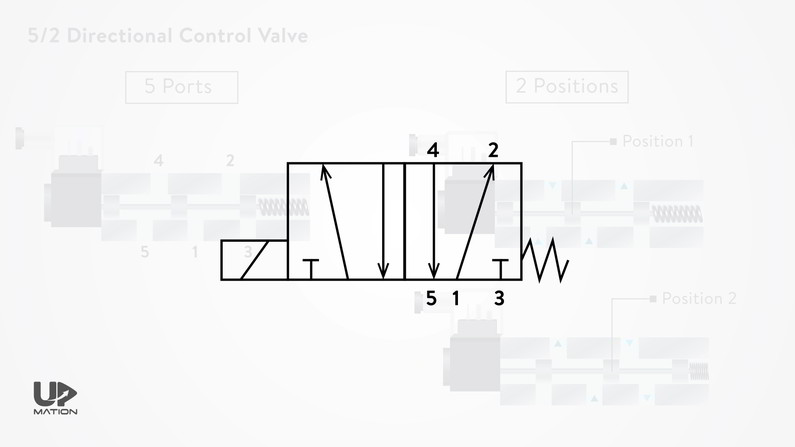
Each square in the symbol represents a position or state.
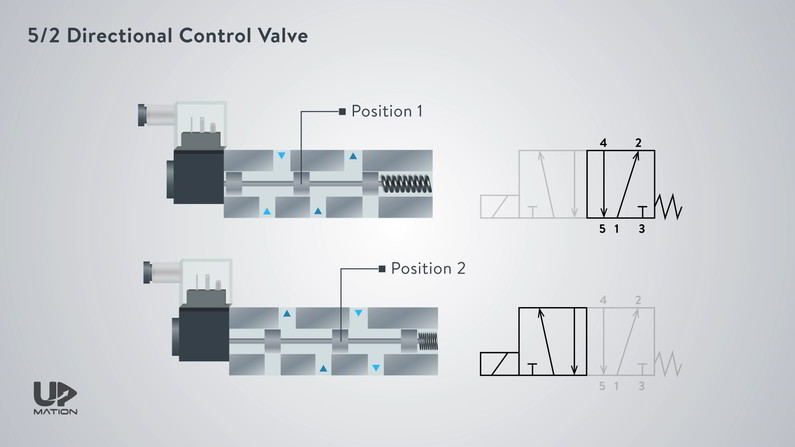
In each state, some arrows show the paths that air can flow through them on that specific position.
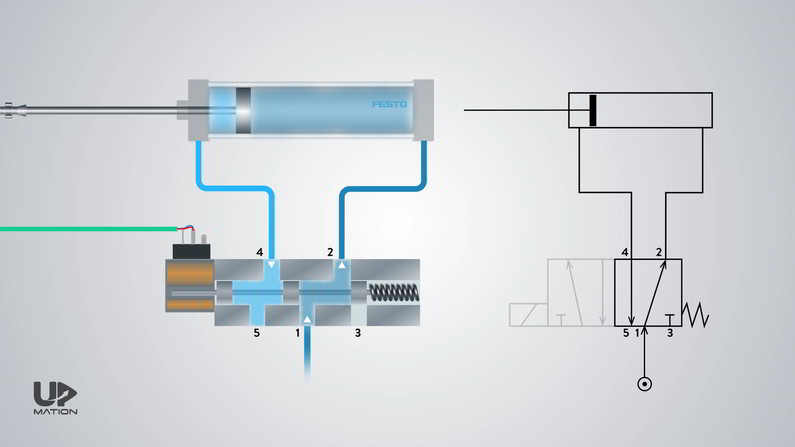
We learned that a 5 by 2 DCV, has 5 ports and this is the ISO designation of the ports which is a more common practice.
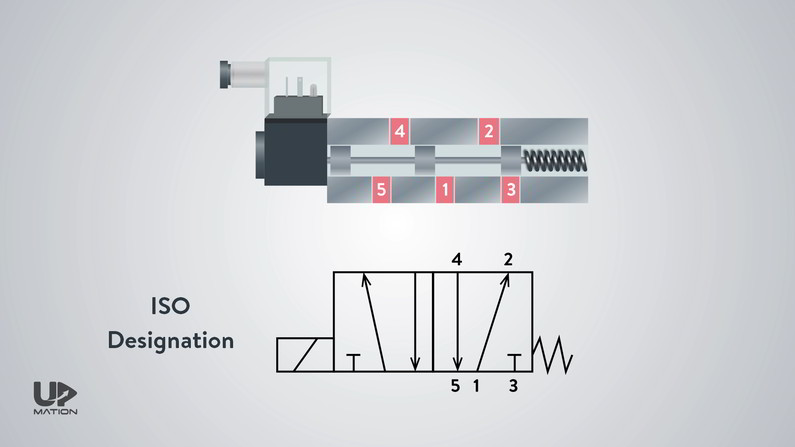
But sometimes you may see an alternative designation of the Directional Control Valves by alphabets in which;
– The P is for “power” or “pressure” that comes from the air source.
– The Ea and Eb are for the exhaust ports.
– The A and B are the output ports to/from the actuator.
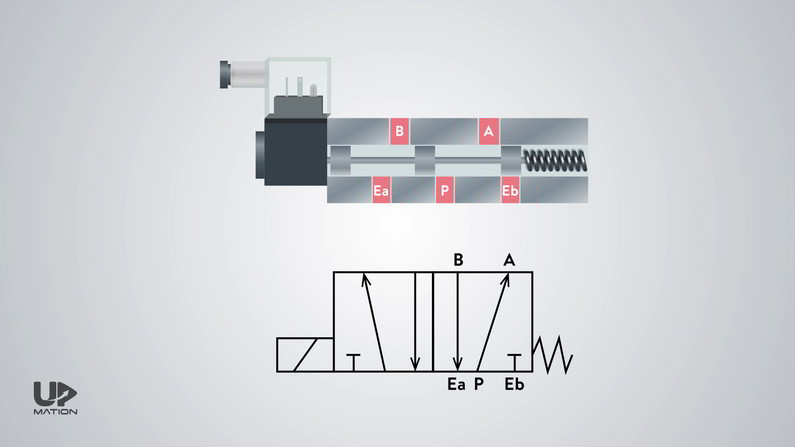
There are the signs for electric Solenoid and Spring Return in the Directional Control Valve schematic.
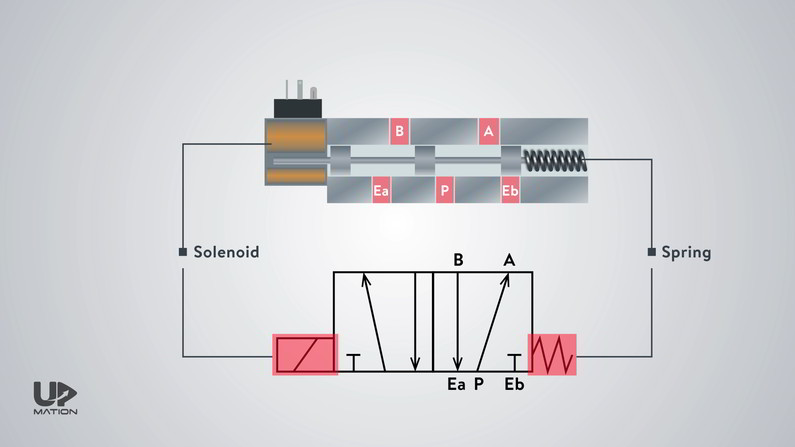
In our circuit, when the valve is in its rest position, the square besides the spring symbol is active.
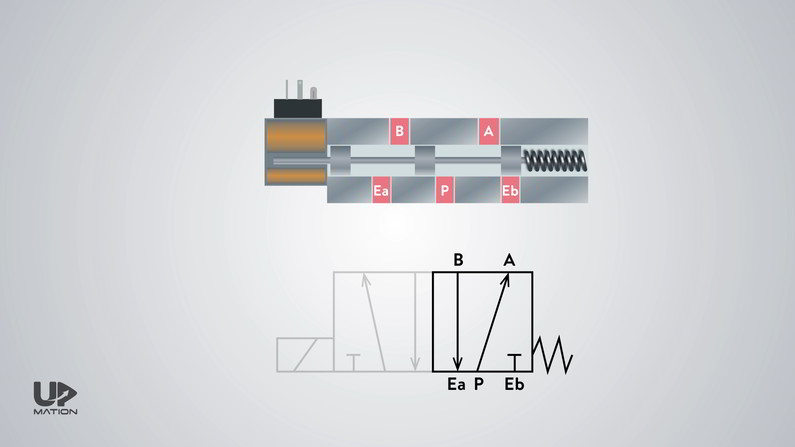
When the solenoid gets energized and the spool changes position, the other square is active.
Generally, the square just beside the solenoid sign is active when the solenoid is energized and this is a rule of thumb for any directional control valve schematic.
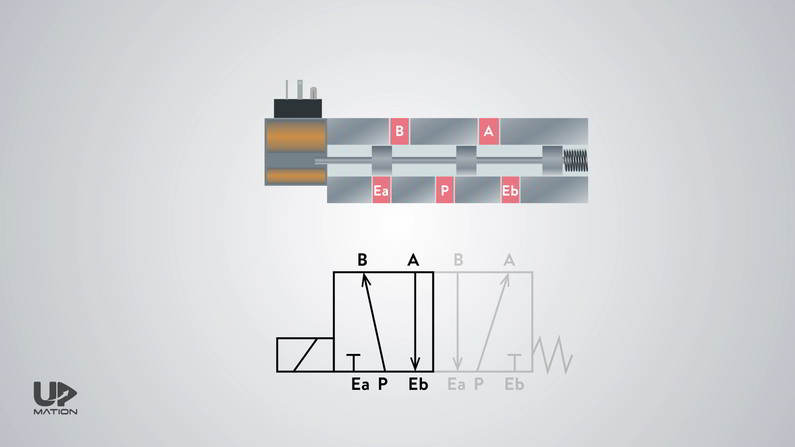
In the end, keep in mind that there are a variety of other directional control valves with more complex functions in different applications that we can check them in future articles.
Thanks for reading another article. Please spread the word by sharing this article:

Great work …. Greatly simplified stuff..
Thank you, Sachin! Happy you liked it!
Great work.Easy to understand with schematic drawing and animation.
Thank you, Anand! Great to hear that!
At long last, I understand these diagrams. Great explanation taken step by step. Thanks!
Hey! Great to hear that and you’re very welcome!
Hello Mr Amirhossein, such a detailed explanation and the content has been curated so beautiful. Keep up the good work. BTW thanks!!
Hi, Varma! Thanks a lot! We’ll try to increase the frequency of published videos and articles.
I have installed several solenoid valves and understand now how it works, thanks to you and the easy to read diagrams.
You’re most welcome, Helmut! We’re delighted we could help you!
Please watch these videos about DCVs as you might benefit from them as well, and let us know what you think;
– Directional Control Valves (Hydraulic & Pneumatic): Types, Mechanism, Actuating Method, Applications: https://youtu.be/IZSCd1MK7ek
– Spool Valves: How They Work and How to Read Their Symbols | Spool Valve Operation | 3/2 Spool Valve: https://youtu.be/hkyCJpN-1O4
What type of festo slide valve?
It puts me on another level of understanding the pneumatics applications in the pneumatic schematics,thank you very much.